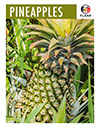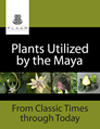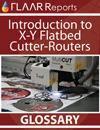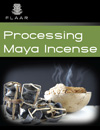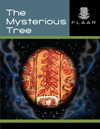FLAAR had a rollout camera way back in the 1990’s (actually had two of them). Then when a completely new technology digital rollout camera was developed, we were asked to be the beta tester for the new digital rollout system for Maya vases.
Once we had all the digital rollouts of Maya vases available, we needed ways to print them out, since most rollouts are rather long for a computer monitor (a digital rollout can be as large as you wish it to be, we can print them up to 15-feet long at beautiful resolution). With hand-made mechanical rollout cameras, you can’t enlarge them without fuzziness and distortion (because mechanical rollout cameras have no way to calculate the absolutely proper speed of rotation; with digital technology, the camera itself measures everything and your computer, that controls the camera, does all the calculations down to the pixel column).
Product comparisons and information on full-bleed oversize (long-format) laser printers.
In the beginning (1990’s), I experimented with laser printers, working to figure out which laser printer was the best. We looked at laser printers from Xante, but none were available for testing. Then we looked at GCC (no relationship to GCC in Taiwan). The first GCC laser printer was excellent, very nice. This printed the image you see Andrea holding. This is Andrea David, now Andrea Rickert, in Germany, where FLAAR stored its Belgian-made rollout camera and did evaluations of printers for many years to learn which printers were best for reproducing rollouts of Maya vases.The next model GCC laser printer we received for evaluations had issues, and was not as good as the first one. But the original one I believe we are still using in 2008 (I think it is now in our office in Guatemala).Now it’s 2008 and the landscape for laser printers has changed considerably. HP and Canon are the biggest players. Ricoh and others also work hard with slightly different technology. Minolta bought QMS and then Konica bought Minolta. Today they are KonicaMinolta. I still have the original QMS laser printer, now about 10 years old. Still works well.The photograph below shows a page at 33 x 66 centimeters (roughly 13x26 inches), since paper 13x35.4 inches is hard to find without special ordering it. We have not updated that web site because all the printing technology has evolved from laser toner to inkjet. So FLAAR now tests inkjet printers to see which are the best for making museum displays. Our inkjet printer evalation web sites are www.FineArtGicleePrinters.org, www.wide-format-printers.org, and www.large-format-printers.org. Printers for fine art photography are evaluated on www.digital-photography.org.
 |
 |
|
This rollout shows the only known fully-hieroglyphic Chama Maya vase. The bowl is at the top, the rollout is along the bottom.
|
If you are an epigrapher and need to study every glyph in complete detail, then it sure helps to have every glyph nicely enlarged. But this is only possible if you chose a laser printer that can handle long-format (oversize format). This Chama vessel has three rows of hieroglyphs (over 44 glyphs all together). The blemish at the left is where a section of the sidewall is missing (after all, this pot is over a thousand years old).
Most recently updated Feb 8, 2008.








